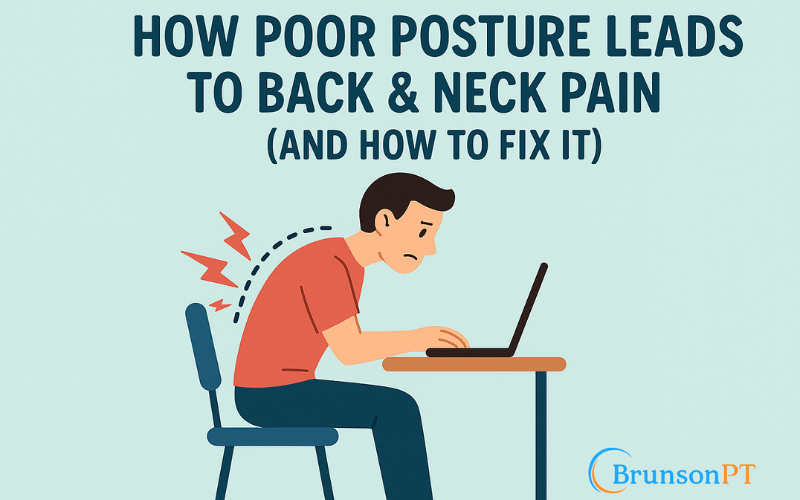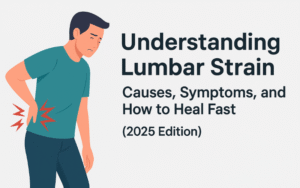Poor posture is one of the most common causes of back and neck pain, yet many people don’t realize how much it affects their daily lives. Slouching at a desk, looking down at a phone, or sitting the wrong way for hours can put serious strain on your spine. Over time, this leads to stiffness, muscle imbalances, and even long-term damage.
The good news? You can fix it. With simple adjustments and targeted exercises, you can improve your posture, reduce pain, and protect your spine for the future. In this post, we’ll break down how poor posture harms your body—and the best ways to correct it before it gets worse.
Table of Contents
📌 Next Steps:
👉 Download this quick PDF exercise guide with detailed exercises, instructions, and a daily routine: Postural Strengthening Exercise Guide
🏁 How Poor Posture Causes Back & Neck Pain
Poor posture isn’t just a bad habit—it’s a major cause of back and neck pain. When your body is out of alignment, it puts extra stress on your muscles, joints, and spine. Over time, this leads to stiffness, discomfort, and even chronic pain. Let’s break down exactly how poor posture affects your body and why fixing it is so important.
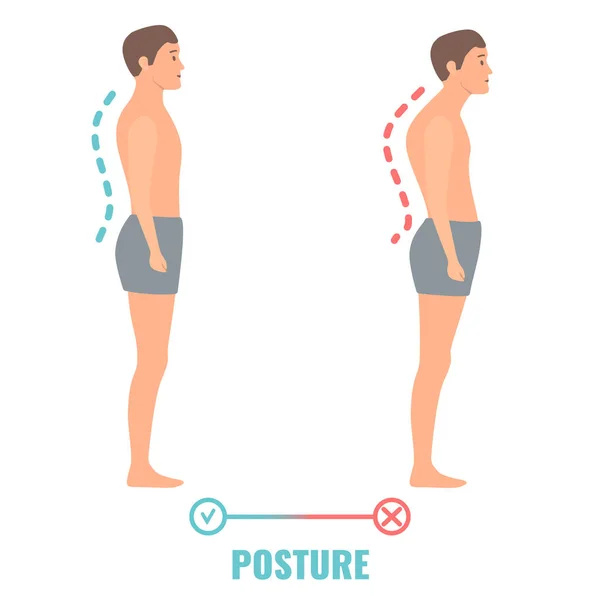
1. Increased Pressure on the Spine
Your spine is designed to support your body in a neutral position. But when you slouch or hunch forward, it disrupts this natural alignment. Poor posture increases pressure on the spine, especially in the neck and lower back. This added strain can lead to disc degeneration, nerve compression, and chronic pain.
2. Muscle Imbalances and Weakness
Poor posture forces some muscles to work harder while others become weak. For example:
- Rounded shoulders cause tight chest muscles and weak upper back muscles.
- Forward head posture strains the neck and weakens deep cervical stabilizers.
- Slouching weakens the core and overstretches the lower back muscles.
Over time, these imbalances lead to pain, reduced flexibility, and a higher risk of injury.
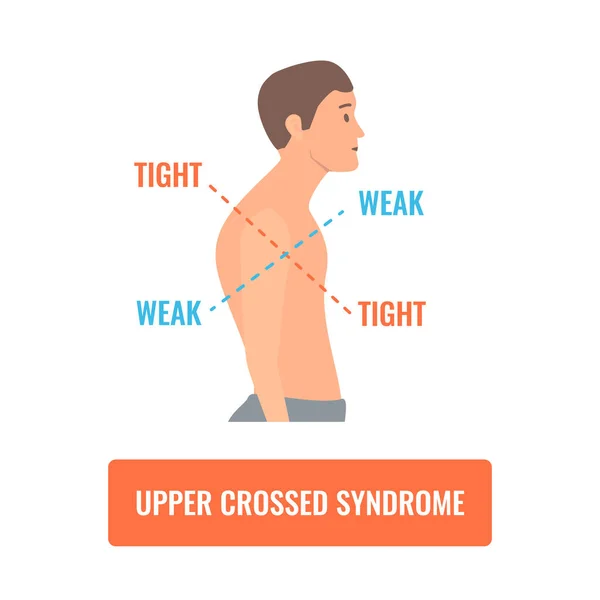
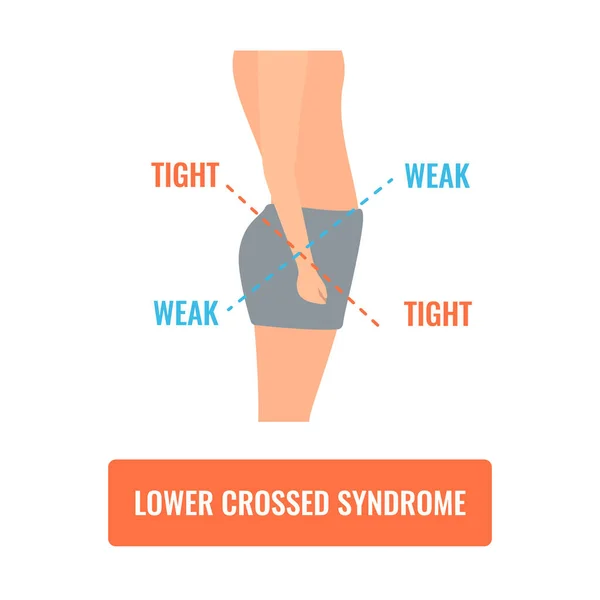
3. Poor Circulation and Nerve Compression
Sitting or standing in a poor posture for long periods can restrict blood flow and compress nerves. This can lead to:
- Tingling or numbness in the arms, hands, or legs.
- Tension headaches caused by neck strain.
- Sciatica pain due to lower back misalignment.
These issues don’t just cause discomfort—they can also limit mobility and daily activities.
4. Added Stress on Joints and Discs
Your joints and spinal discs act as shock absorbers for your body. Poor posture increases wear and tear on these structures, leading to:
- Early degeneration of spinal discs (degenerative disc disease).
- Increased risk of herniated discs and arthritis.
- Joint pain, especially in the shoulders, hips, and knees.
5. Poor Posture Leads to Chronic Pain Over Time
Ignoring poor posture doesn’t just cause short-term discomfort—it can lead to chronic pain conditions. Many people with poor posture develop persistent neck pain, lower back pain, and tension headaches. Without correction, these issues can become long-term problems that affect overall quality of life.
🧾Bottom Line: Fixing Poor Posture Prevents Pain
Poor posture is one of the biggest contributors to back and neck pain, but the good news is that it’s fixable. In the next section, we’ll cover the best exercises, stretches, and ergonomic changes to improve posture and prevent pain before it gets worse.
🚨 The Long-Term Consequences of Poor Posture
Poor posture doesn’t just cause short-term discomfort—it can lead to serious long-term health problems. Over time, the strain on your spine, muscles, and joints can result in chronic pain, mobility issues, and even permanent damage. Here’s what happens if poor posture is left unchecked.
1. Chronic Back and Neck Pain
One of the most common long-term effects of poor posture is ongoing back and neck pain. When your spine is misaligned, certain muscles and joints take on extra stress. This leads to:
- Constant stiffness and soreness in the neck and shoulders.
- Lower back pain that worsens over time.
- Frequent tension headaches caused by neck strain.
These issues don’t just affect comfort—they can interfere with daily activities, work, and sleep.
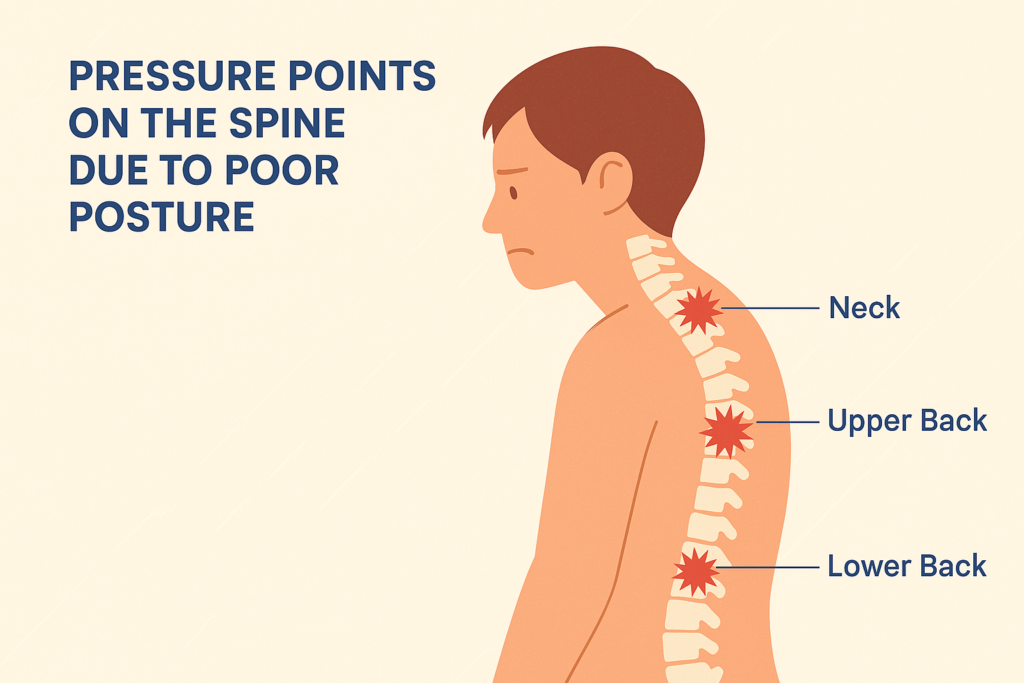
2. Increased Risk of Spinal Conditions
Poor posture puts extra stress on your spine, increasing the risk of serious spinal conditions such as:
- Herniated discs: When spinal discs weaken and bulge, pressing on nerves and causing pain.
- Degenerative disc disease: Faster wear and tear on spinal discs, leading to chronic back pain.
- Spinal misalignment: Issues like scoliosis or kyphosis (hunched upper back) caused by years of bad posture.
Left untreated, these conditions can become debilitating, requiring physical therapy or even surgery.
3. Reduced Mobility and Flexibility
Poor posture limits your body’s ability to move freely. Tight muscles, joint stiffness, and spinal misalignment can make it harder to:
- Bend, twist, or reach without discomfort.
- Sit or stand for long periods without pain.
- Perform daily activities like lifting, walking, or exercising.
Over time, this leads to reduced flexibility and a higher risk of injury.
4. Poor Circulation and Nerve Damage
Slouching or sitting in the wrong position for hours can restrict blood flow and compress nerves. This can cause:
- Numbness or tingling in the arms, hands, and legs.
- Varicose veins due to poor circulation.
- Pinched nerves that lead to pain and weakness.
If nerve compression becomes severe, it can lead to long-term nerve damage, making it harder to regain full function.
5. Mental and Emotional Effects
Posture doesn’t just affect the body—it also impacts mood and confidence. Studies show that poor posture can contribute to:
- Increased stress and anxiety levels.
- Lower energy and fatigue.
- Reduced self-confidence and a negative body image.
Improving posture can help you feel better physically and mentally, leading to a more active and confident lifestyle.
🛠️ How to Fix Poor Posture
If poor posture is causing back and neck pain, the good news is that you can fix it. With simple adjustments, targeted exercises, and better daily habits, you can correct your posture and prevent long-term damage. Here’s how to get started.
1. Strengthen and Stretch Key Muscles
Poor posture often results from muscle imbalances—some muscles become too tight while others weaken. To fix this, focus on strengthening weak muscles and stretching tight ones.
🏋️ Best Exercises for Better Posture
- Chin Tucks – Helps correct forward head posture by strengthening neck muscles.
- Shoulder Blade Squeeze – Improves upper back strength and posture.
- Planks – Strengthens the core, which supports spinal alignment.
- Cat-Cow Stretch – Increases spine flexibility and reduces stiffness.
- Chest Stretch – Helps open up the chest and counteract slouching.
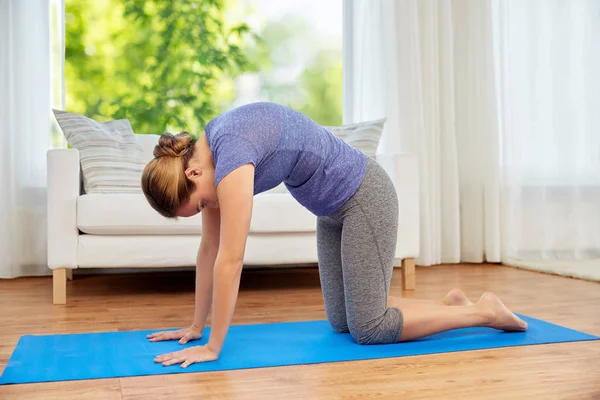
2. Improve Your Sitting and Standing Posture
Fixing poor posture isn’t just about exercise—it’s also about how you sit and stand throughout the day.
✅Proper Sitting Posture
- Keep feet flat on the floor and knees at a 90-degree angle.
- Sit with your back straight and shoulders relaxed.
- Use a chair with lumbar support or place a small pillow behind your lower back.
- Avoid leaning forward or slouching while working at a desk.
✅Proper Standing Posture
- Stand tall with shoulders back and core engaged.
- Keep weight evenly distributed between both feet.
- Avoid locking your knees or sticking your hips forward.
- If standing for long periods, shift your weight occasionally.
3. Optimize Your Workstation for Better Posture
If you spend long hours at a desk, poor posture can become a habit. Setting up an ergonomic workspace can help keep your spine aligned.
💡Ergonomic Tips for Better Posture at Work
- Monitor Height: Position your screen so your eyes are level with the top third of the screen.
- Chair Support: Use a chair that supports your lower back.
- Keyboard & Mouse Placement: Keep them at elbow height to prevent hunching.
- Frequent Breaks: Stand, stretch, or walk every 30-60 minutes to prevent stiffness.
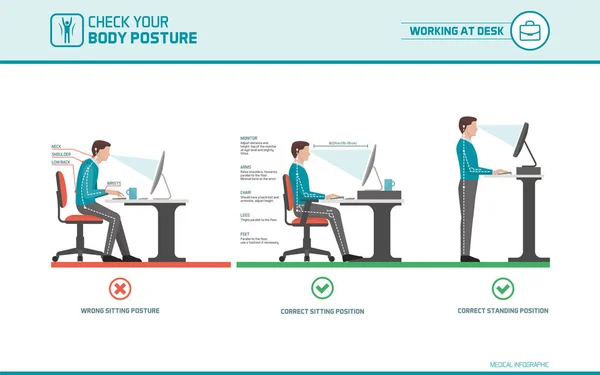
4. Use Posture-Correcting Tools
Sometimes, extra support is needed to retrain your posture. Consider using:
- Posture Braces: These gently pull your shoulders back to help you maintain good alignment.
- Lumbar Cushions: Supports the lower back while sitting.
- Standing Desks: Helps reduce long periods of sitting, which can worsen posture.
- Posture Apps & Reminders: Digital tools can alert you when you start to slouch.
🚨Check out our top recommendations for posture-correcting tools! Click links below 👇
🛠️ Recommended Tools for Posture Fix
| Product | Why You Need It | Shop Now |
|---|---|---|
| Lumbar Brace | Provides lower back support and encourages proper spinal alignment during activity. | 🛒Buy on Amazon |
| Lumbar Cushion | Helps maintain natural spine curvature when sitting for long periods. | 🛒Buy on Amazon |
| Standing Desk | Reduces prolonged sitting and promotes better posture throughout the workday. | 🛒Buy on Amazon |
5. Build Daily Habits for Better Posture
The key to fixing poor posture is consistency. Small, daily habits can make a big difference over time.
- Check Your Posture Often: Be mindful of your sitting and standing posture throughout the day.
- Strengthen Your Core: A strong core naturally supports better posture.
- Stretch Regularly: Take a few minutes daily to stretch tight muscles.
- Stay Active: Regular movement prevents stiffness and reinforces good posture habits.
🧠 Final Thoughts: Fix Poor Posture Before It’s Too Late
Poor posture can cause serious back and neck pain, but with the right exercises, habits, and tools, you can fix it. Start small, stay consistent, and your body will thank you.
In the next section, we’ll cover how to maintain good posture long-term so you don’t slip back into bad habits.
💡 Final Tips for Maintaining Good Posture
Fixing poor posture is a great start—but keeping it that way is just as important. Once you’ve worked to improve your posture, the next step is building habits that help you maintain it every day. Good posture doesn’t happen overnight, but with the right strategies, you can protect your spine for life.
Here are some easy-to-follow tips to help you stay on track:
1. Stay Active Every Day
Movement is one of the best ways to maintain good posture. When you sit too long, your muscles tighten and weaken.
- Take short walks throughout the day.
- Stretch after sitting for more than 30 minutes.
- Add strength training to your weekly routine to support your core and back.
2. Check Your Posture Often
It’s easy to slip back into bad habits. Train yourself to check your posture regularly.
Ask yourself:
- Are my shoulders relaxed and back?
- Is my head in line with my spine?
- Am I slouching or leaning forward?
Use posture reminder apps or sticky notes to help you stay mindful.
3. Set Up Your Environment for Success
Your surroundings can make or break your posture. A few small changes can go a long way:
- Use an ergonomic chair with lumbar support.
- Adjust your computer screen to eye level.
- Keep your feet flat on the floor while sitting.
- Switch to a standing desk if possible, or alternate between sitting and standing.
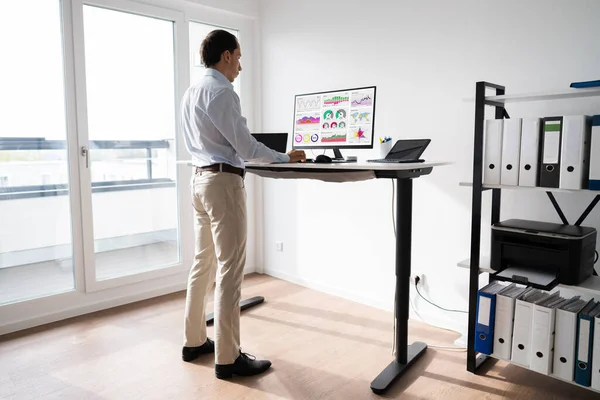
4. Keep Your Core Strong
A strong core supports your spine and helps you hold good posture without effort. Try to do core exercises 2–3 times a week.
Some simple, posture-friendly core exercises include:
- Planks
- Bird dogs
- Dead bugs
- Glute bridges
These moves help your body stay upright and balanced throughout the day.
5. Listen to Your Body
Pain, tightness, and fatigue are often signs of poor posture. Don’t ignore them.
- Adjust your position if something doesn’t feel right.
- Take breaks if you’ve been in one spot too long.
- Stretch and move when your body feels stiff or sore.
Staying aware of your body’s signals can prevent small posture problems from becoming big ones.
🧘♀️ Posture Is a Daily Practice
Maintaining good posture takes time and consistency, but the benefits are worth it. You’ll feel stronger, move better, and reduce your risk of long-term pain.
Make posture a part of your daily routine—just like brushing your teeth—and your spine will thank you for years to come.
🏆 Bonus: Daily Posture Habit Tracker
- ✅ Morning posture check
- ✅ 5-minute stretch break every hour
- ✅ Core exercise (planks, bird dogs, etc.)
- ✅ Proper sitting and standing posture
- ✅ Evening posture reflection


